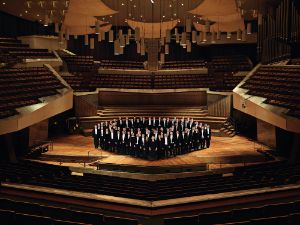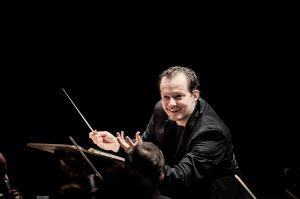Concert | Berlin-based orchestras / Percussion
Berliner Philharmoniker

Iceberg at Cape York, Greenland 2005 © Wikimedia Commons
Hector Berlioz intuited his music in instrumental colours and saw the orchestra as “one great instrument”, as a palette of colours with immense possibilities. In his “Symphonie fantastique” (1830), he depicts the drug-induced frenzy of an antihero unhinged by a broken heart. Later, Berlioz systemized his experience in a treatise on instrumentation. His “Grand traîté” became a definitive guideline and influenced many composers, among them Claude Debussy and his conception of sound.
In “Prélude à l’après-midi d’un faune” (1894), Debussy refined and differentiated the tonal nuances of the orchestra described by Berlioz in order to evoke an imagined ancient world. Edgard Varèse was an acquaintance of Debussy’s and had been introduced to his treatise on instrumentation via Richard Strauss. Varèse freed himself from traditional settings, rearranged the orchestra and expanded the palette of sounds. For “Arcana” (1927/1960), he asked for 119 musicians and twelve percussionists. The great mass of sounds produced by the huge orchestra in “Arcana”, however, follows its own laws. Varése described the blocks he piled up in this composition as “bodies of intelligent sounds that move freely in space”. Andris Nelsons, who performed at Musikfest Berlin 2015 with “his” Boston Symphony Orchestra, will trace this impressive development of the modern orchestra together with the Berlin Philharmoniker.
Claude Debussy [1862-1918]
Prélude á l’après-midi d’un faune
based on a poem by Stéphane Mallarmé [1894]
Edgard Varèse [1883-1965]
Arcana
for large orchestra [1925-1927, rev. 1960]
Hector Berlioz [1803-1869]
Symphonie fantastique op. 14 [1830]
A Berliner Philharmoniker Foundation event
in cooperation with Berliner Festspiele / Musikfest Berlin

